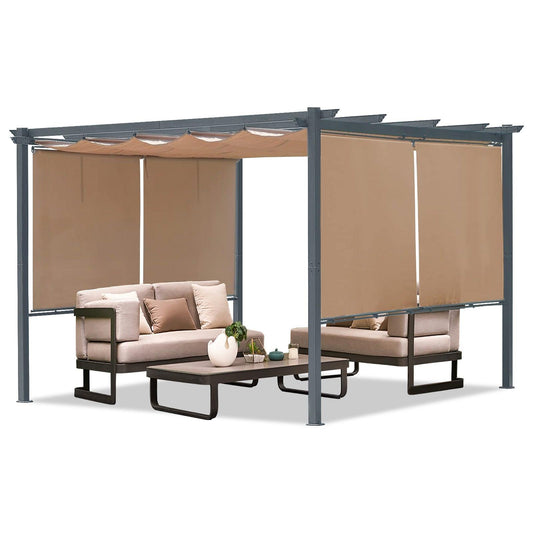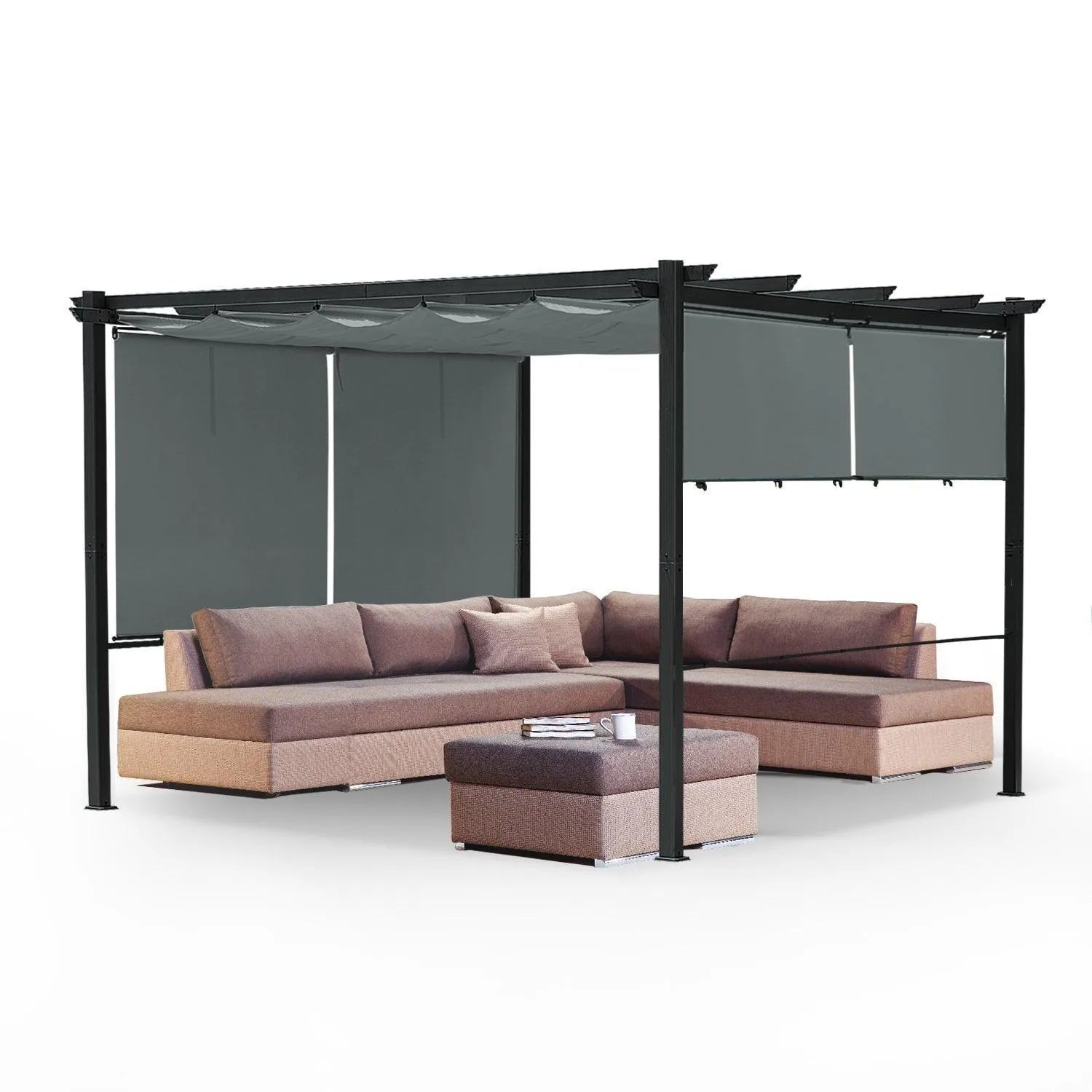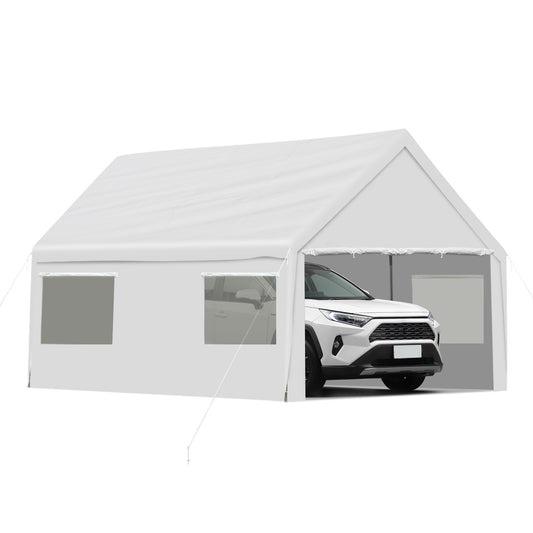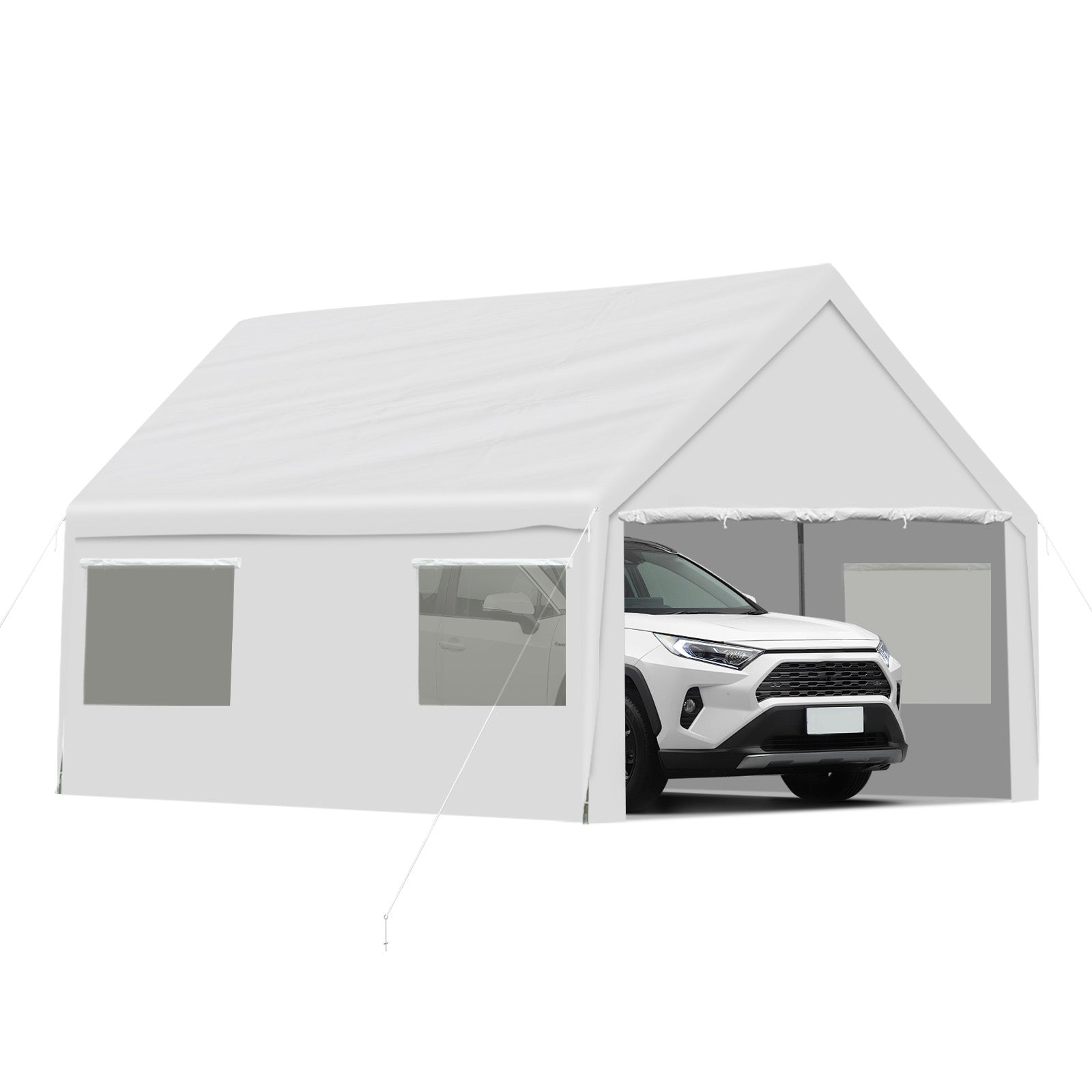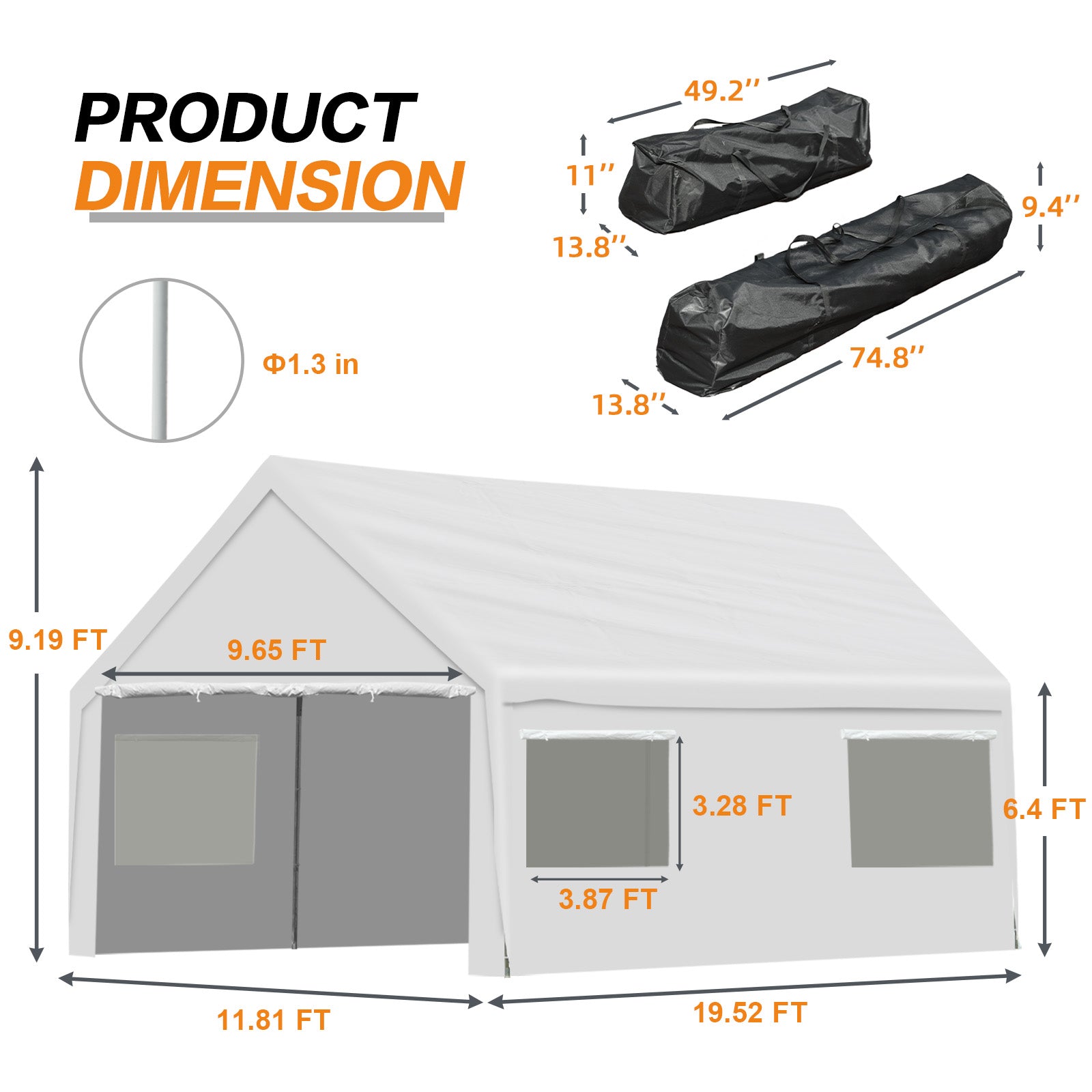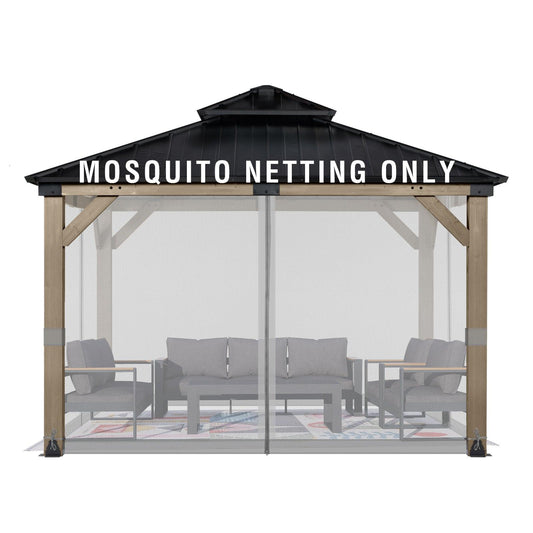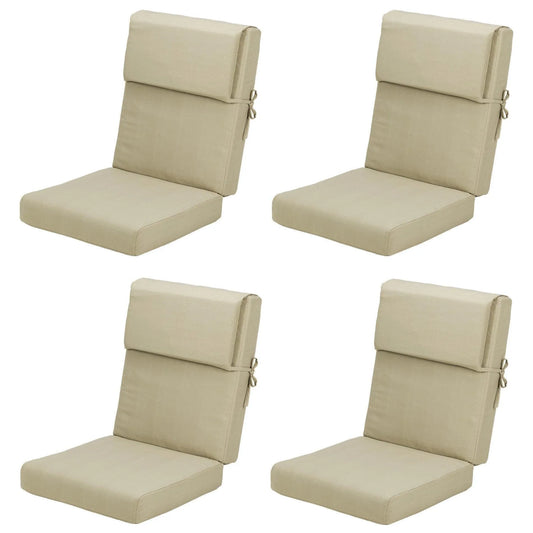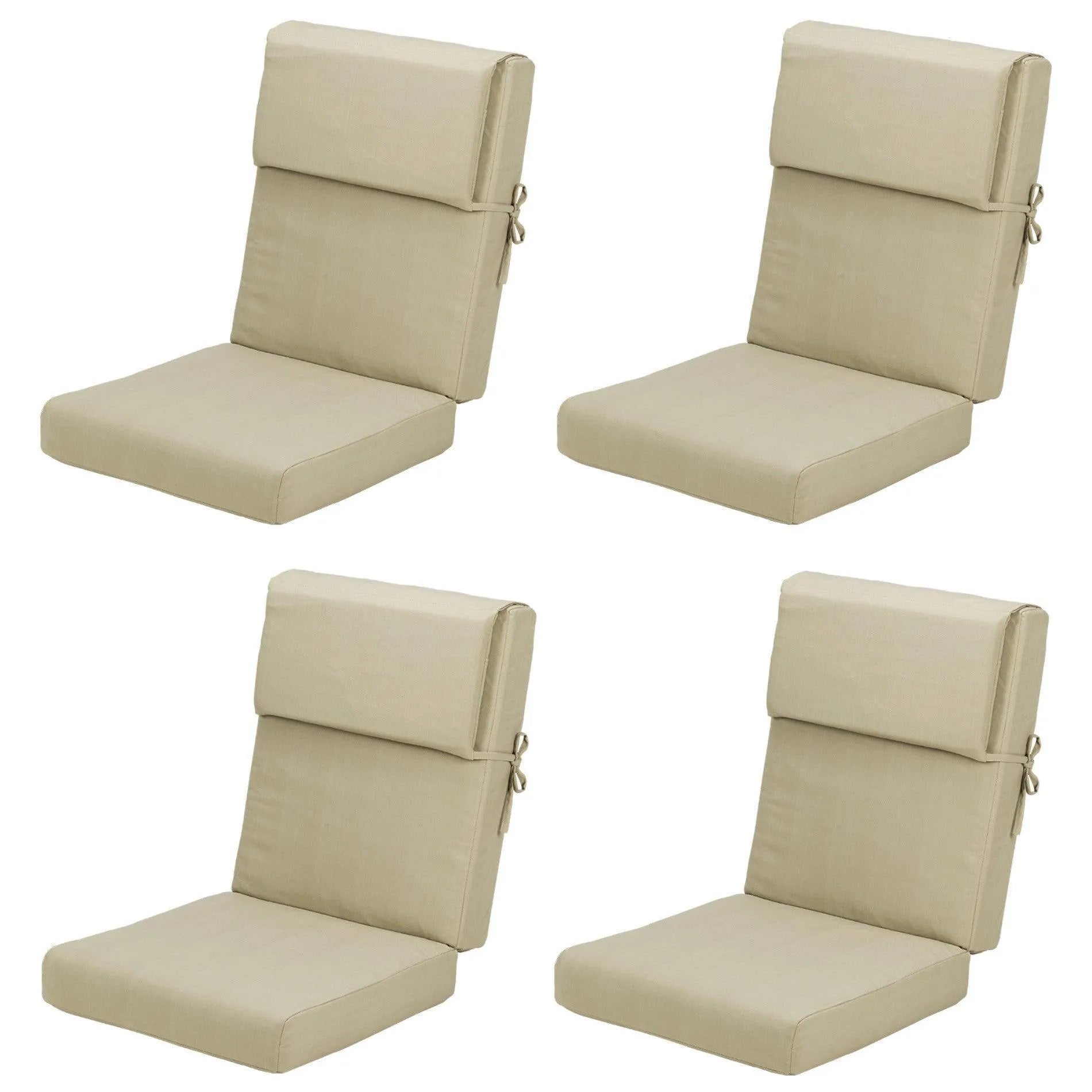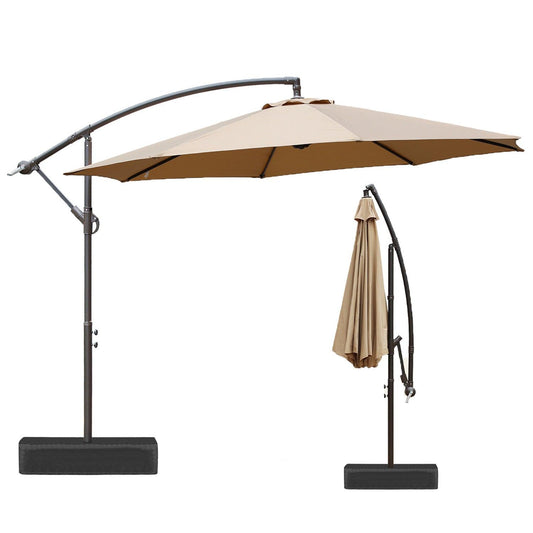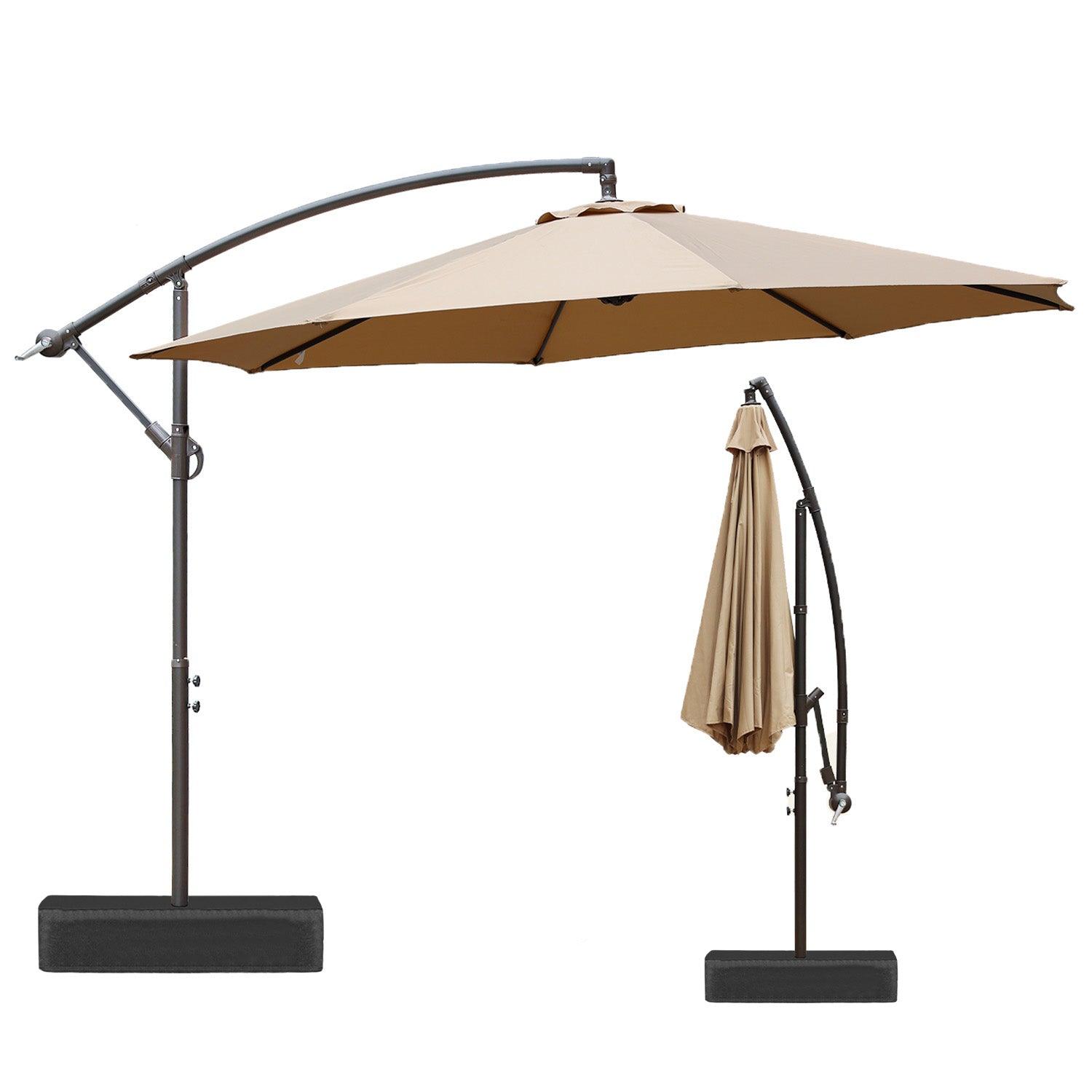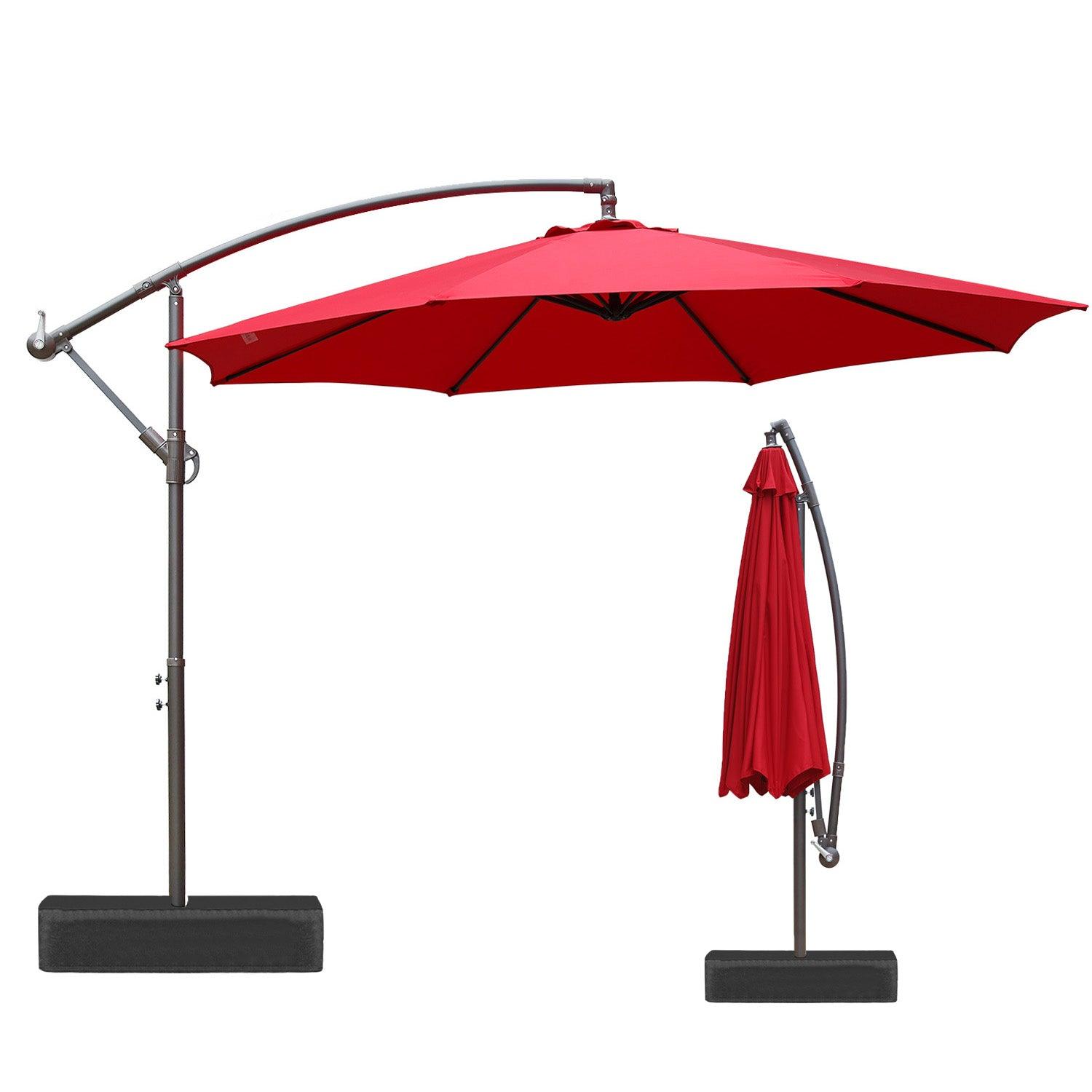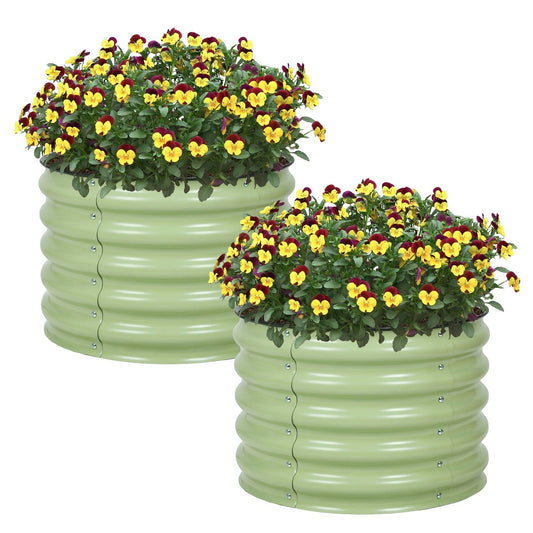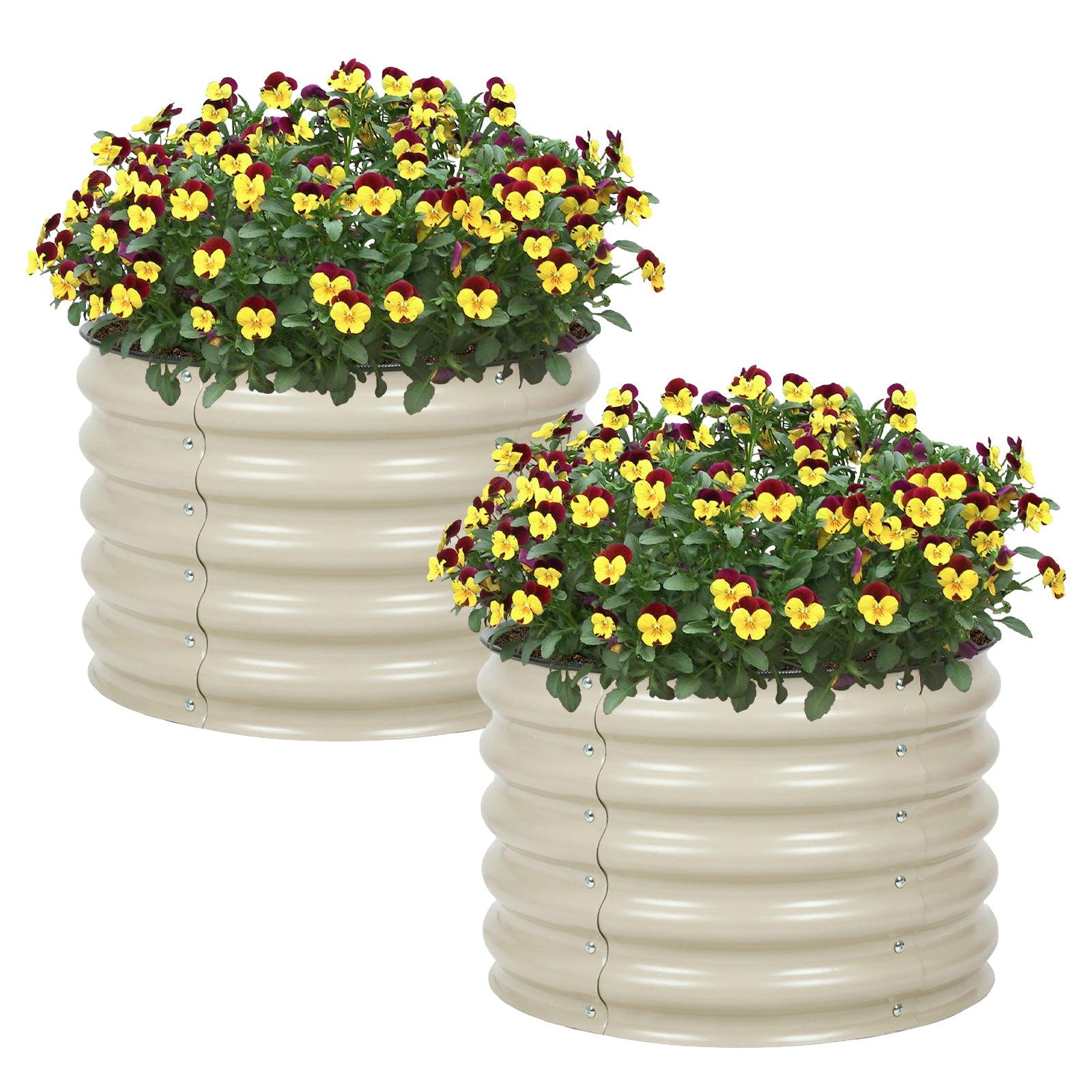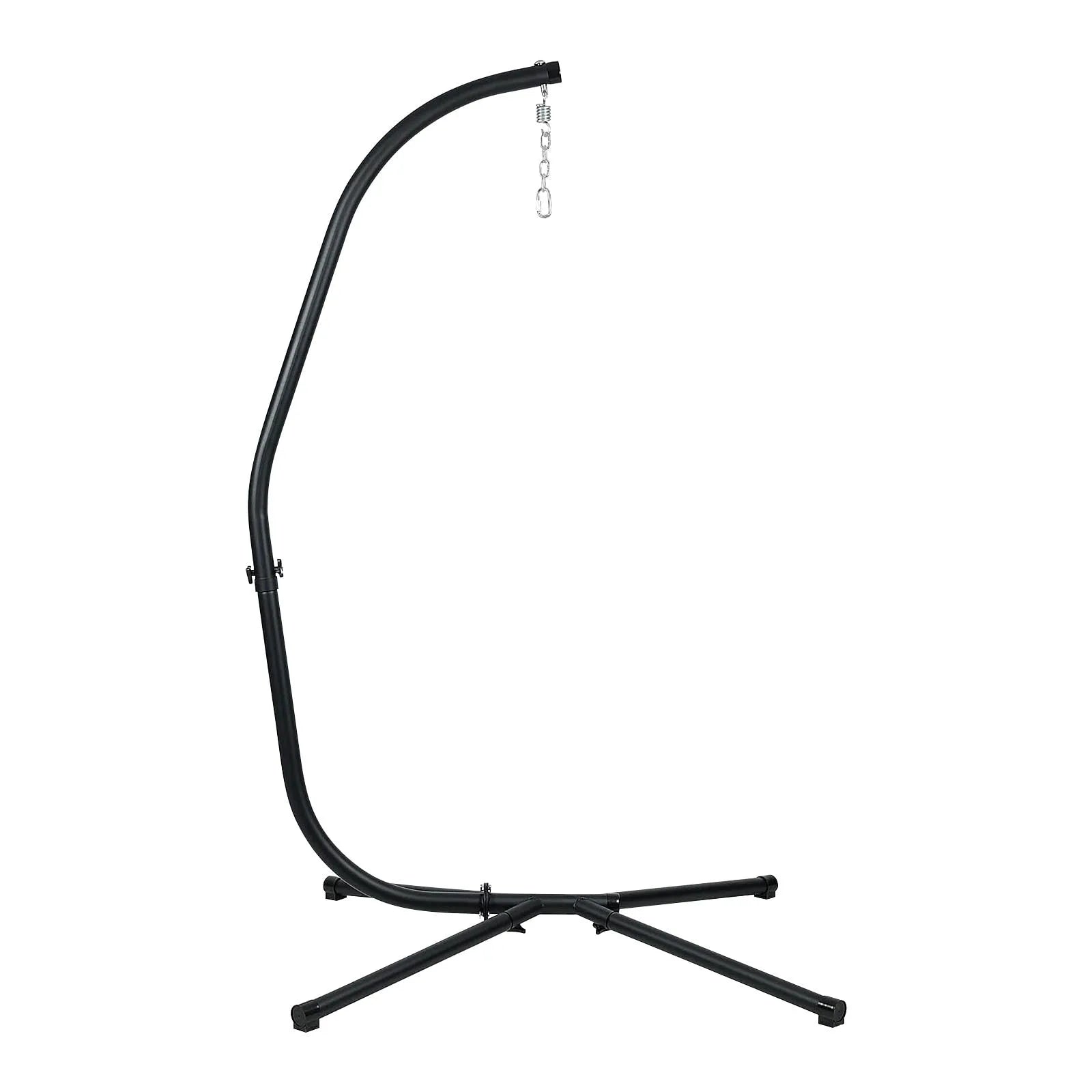Introduction
Weight for canopy tent is crucial to ensuring your outdoor canopy remains stable and secure in your backyard. At Aoodor Shop, we focus on providing the best outdoor canopy tent solutions by highlighting proper canopy tent dimensions and the safest, professionally made weights—far beyond DIY fixes. This guide helps families choose the right weight per tent leg, factoring in wind conditions and surface types, so you can protect your canopy investment and enjoy your outdoor space safely.
1. How Much Weight for Canopy Tent? Understanding the Essentials
Why the Right Weight Matters for Safety and Canopy Longevity
The importance of proper canopy tent weighting cannot be overstated when it comes to family safety and equipment protection. An inadequately weighted canopy poses serious risks, including structural damage, injury to family members and guests, and potential property damage when the tent becomes airborne during windy conditions.
Proper weighting extends your canopy's lifespan by preventing frame stress, fabric tears, and connection failures that occur when tents flex excessively in wind. The initial investment in quality weights pays dividends through reduced replacement costs and enhanced peace of mind during outdoor gatherings.
Beyond safety considerations, correctly weighted canopies provide consistent shelter performance, maintaining their intended shape and coverage area throughout varying weather conditions. This reliability ensures your family can depend on their outdoor canopy tent for regular use and special occasions.
How Tent Dimensions Impact Weight Requirements
Canopy tent dimensions directly correlate with weight requirements due to the physics of wind resistance and leverage. Larger canopy tent dimensions create more surface area for wind to act upon, generating greater lifting forces that must be countered with proportionally increased ground anchoring.
The relationship between tent size and required weight follows these principles:
- Surface area increases exponentially with dimension increases
- Wind load calculations factor both height and coverage area
- Leverage effects amplify forces at tent leg connection points
-
Frame strength varies with tent size, affecting weight distribution needs
Understanding these relationships helps families select appropriate weights without over-purchasing or under-protecting their canopy investment.
Overview of Professional vs. DIY Canopy Weights
Professional canopy weights offer engineered solutions designed specifically for tent anchoring applications. These weights undergo testing for durability, weather resistance, and optimal weight distribution to ensure reliable performance across various conditions.
DIY canopy weights, while initially cost-effective, often lack the durability and safety margins built into professional alternatives. Common DIY solutions include water jugs, concrete blocks, or makeshift sandbags that may fail during critical moments or create additional hazards around family gathering areas.
Key advantages of professional weights include:
- Engineered weight distribution for maximum stability
- Weather-resistant materials that maintain performance over time
- Safe handling features such as ergonomic grips and protective edges
- Compatibility assurance with standard tent leg configurations
2. Types of Canopy Weights: Plates, Sandbags, Water-Fillable, and More
Pros and Cons of Common Canopy Weight Types
Different weight types serve various needs and preferences among families seeking the best outdoor canopy tent setup. Understanding each option's strengths and limitations helps inform purchasing decisions.
|
Weight Type |
Advantages |
Disadvantages |
|
Steel Plate Weights |
Excellent stability, concentrated weight, low profile design, ideal for frequent use, highly durable |
Permanent heavy weight, challenging storage and transport |
|
Sandbag Weights |
Flexible weight adjustment, affordable pricing, easy to handle when empty |
Require regular maintenance, sand loss potential, faster deterioration outdoors |
|
Water-Fillable Weights |
Convenient transport when empty, quick deployment when filled, adjustable weight |
Potential freezing in cold climates, possible leakage over time |
|
Concrete-Filled Weights |
Maximum stability, reasonable cost, excellent for permanent setups |
Heavy and difficult to move, challenging storage, not portable |
Benefits of Professionally Made Weights for Stability and Durability
Professionally manufactured canopy weights incorporate design features specifically engineered for tent anchoring applications. These weights undergo testing protocols that ensure consistent performance across varying environmental conditions.
Professional weights typically feature:
- Optimal weight distribution that maximizes stability per pound
- Corrosion-resistant finishes that maintain appearance and function
- Secure attachment methods that prevent accidental disconnection
-
Ergonomic handling features for safe family use
The investment in professional weights provides long-term value through reduced replacement frequency and enhanced safety margins during unexpected weather changes.
3. Weight Requirements by Canopy Tent Dimensions and Surface Types
Detailed Tables of Weight Per Leg Recommendations by Tent Size
Understanding specific weight requirements for different canopy tent dimensions helps families ensure adequate stability while avoiding unnecessary expense.
|
Tent Size |
Light Wind (0-10 mph) |
Moderate Wind (10-20 mph) |
Strong Wind (20+ mph) |
|
8x8 feet |
15-20 lbs per leg |
25-30 lbs per leg |
35-40 lbs per leg |
|
10x10 feet |
20-25 lbs per leg |
30-35 lbs per leg |
40-50 lbs per leg |
|
12x12 feet |
25-30 lbs per leg |
35-45 lbs per leg |
50-60 lbs per leg |
|
10x15 feet |
25-35 lbs per leg |
40-50 lbs per leg |
55-65 lbs per leg |
|
10x20 feet |
30-40 lbs per leg |
45-55 lbs per leg |
60-75 lbs per leg |
Adjustment for Surfaces: Grass, Concrete, Sand
Different surface types affect weight requirements due to varying levels of natural anchoring and stability they provide to tent legs.
|
Surface Type |
Weight Adjustment |
Additional Considerations |
|
Concrete/Asphalt |
Standard weight requirements |
Excellent stability, may require protective pads |
|
Grass (firm) |
Add 10-15% extra weight |
Stakes can provide additional anchoring |
|
Grass (soft) |
Add 20-25% extra weight |
Consider broader weight footprint |
|
Sand |
Add 25-30% extra weight |
Use sand-specific anchoring methods |
|
Gravel |
Add 15-20% extra weight |
Ensure level placement |
These adjustments account for surface-specific factors that influence overall canopy stability and help families adapt their weighting strategy to their specific backyard conditions.
4. Best Practices for Weight Distribution and Canopy Stability
Proper Placement of Weights for Maximal Effect
Strategic weight placement maximizes stability while minimizing total weight requirements. Understanding leverage principles helps families achieve optimal results with their canopy tent setup.
Effective weight placement strategies include:
- Position weights as close to tent legs as possible to minimize leverage effects
- Ensure even weight distribution across all four legs to prevent stress concentration
- Use additional weights at windward legs during directional wind conditions
-
Avoid placing weights where they create tripping hazards for family and guests
Combining Weights with Stakes and tie-downs
The best custom canopy tent setup often combines multiple anchoring methods for maximum security. Weights work synergistically with stakes and tie-downs to create comprehensive stability systems.
Effective combination strategies:
- Primary anchoring through weights provides immediate stability
- Secondary anchoring via stakes offers additional ground connection
- Tie-down straps distribute wind loads across multiple anchor points
-
Redundant systems ensure stability even if individual components fail
This multi-layered approach provides families with confidence during extended outdoor events and changing weather conditions.
Tips on Checking Weather Conditions and Adjusting Weights
Proactive weather monitoring enables families to adjust their canopy setup before dangerous conditions develop. Modern weather resources provide detailed wind forecasts that inform weight adjustment decisions.
Weather-based adjustment guidelines:
- Monitor wind speed forecasts and increase weights when speeds exceed 15 mph
- Consider wind direction changes that may affect canopy orientation
- Prepare for sudden weather changes by having additional weights readily available
-
Establish wind speed limits for safe canopy operation based on your weight capacity
5. Safety Tips and Maintaining Your Canopy Tent Setup
Inspecting Weights and Canopy Frame Regularly
Regular inspection prevents equipment failures that could compromise family safety during outdoor events. Systematic inspection routines help identify potential issues before they become dangerous situations.
Inspection checklist includes:
- Weight attachment security at all connection points
- Frame joints and connections for signs of stress or wear
- Fabric condition including tears, wear spots, or UV damage
-
Weight condition checking for cracks, corrosion, or structural damage
Avoiding Common Mistakes That Cause Tip-overs or Damage
Understanding common setup errors helps families avoid dangerous situations and expensive equipment damage. Many canopy failures result from preventable mistakes rather than equipment defects.
Common mistakes to avoid:
- Insufficient weight for conditions - always err on the side of caution
- Uneven weight distribution creates stress concentration points
- Ignoring weather changes that exceed original setup parameters
-
Using damaged or inadequate weights that may fail during critical moments
Storing and Caring for Weights and Canopy Fabric
Proper storage and maintenance extend equipment life while ensuring reliable performance when needed. Different weight types require specific care approaches to maintain their effectiveness.
Storage best practices:
- Clean weights after each use to prevent corrosion and material degradation
- Store in dry conditions when possible to prevent rust and deterioration
- Inspect regularly during storage to identify maintenance needs
-
Protect canopy fabric from UV exposure and moisture during storage
Explore our complete collection of canopies designed for easy maintenance and long-term family use.
FAQs
1. How Much Weight for Canopy Tent?
The appropriate weight for a canopy tent depends on tent size, wind conditions, and surface type. For standard 10x10 canopy tent dimensions, use 20-25 pounds per leg in calm conditions, increasing to 40-50 pounds per leg in windy conditions. Always calculate total weight needs (typically 80-200+ pounds total) and distribute evenly across all tent legs for optimal stability.
2. How Much Weight to Hold Down a 10x10 Canopy?
To hold down a 10x10 canopy safely, you need a minimum of 80-100 pounds total weight (20-25 pounds per leg) in calm conditions. For moderate winds (10-20 mph), increase to 120-140 pounds total (30-35 pounds per leg). In strong winds (20+ mph), use 160-200 pounds total (40-50 pounds per leg). Always distribute weight evenly across all four legs and add extra weight on grass or soft surfaces for maximum stability.
3. What is the Best Canopy Tent Weight Type?
The best canopy tent weight type balances stability, portability, and durability for your family's specific needs. Steel plate weights offer maximum stability for frequent use, while water-fillable weights provide good portability for occasional use. For most families, professionally made weights with 25-40 pounds per unit offer the ideal combination of performance and convenience.
4. Can I Use DIY Weights Instead of Professional Ones?
While DIY weights can provide temporary solutions, professional weights offer superior safety and durability for regular family use. DIY options like water jugs or concrete blocks may lack proper attachment methods, weather resistance, and optimal weight distribution. For family safety and long-term value, invest in professionally designed weights that meet safety standards.
5. How Do Canopy Tent Dimensions Affect Weight Needs?
Larger canopy tent dimensions require proportionally more weight due to increased wind surface area and leverage effects. A 10x10 tent typically needs 80-100 pounds total weight, while a 10x20 tent may require 180-240 pounds total. Calculate weight needs based on tent surface area and local wind conditions, always prioritizing safety over convenience.
Conclusion
Determining how much weight of canopy tent requires balancing tent size, wind conditions, and surface type for optimal safety. Professional weights offer superior reliability compared to DIY alternatives, while proper distribution ensures maximum stability. Remember: 20-40 pounds per leg, depending on conditions, with larger canopy tent dimensions requiring proportionally more weight. Visit Aoodor Shop's canopy collection to find the perfect tent and professional-grade weights for your family's outdoor adventures.
Ready to secure your outdoor canopy setup? Browse our extensive collection at Aoodor Shop and discover canopies and accessories designed specifically for medium families who prioritize safety and reliability.




